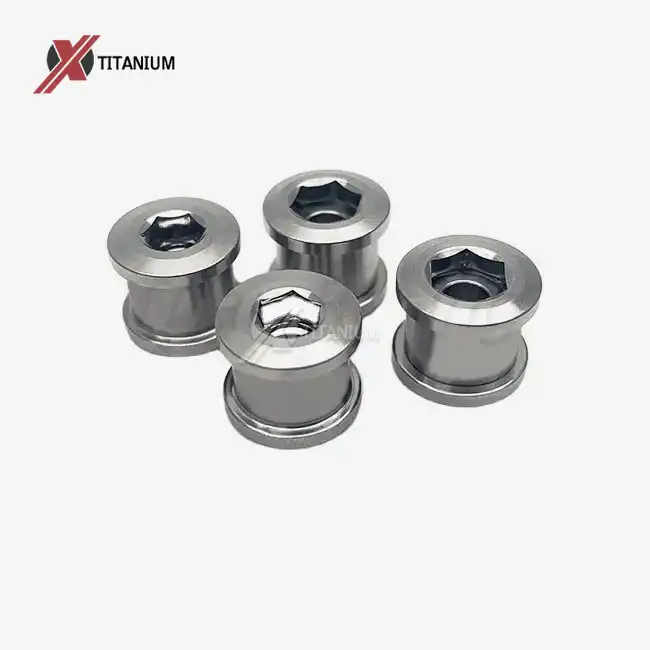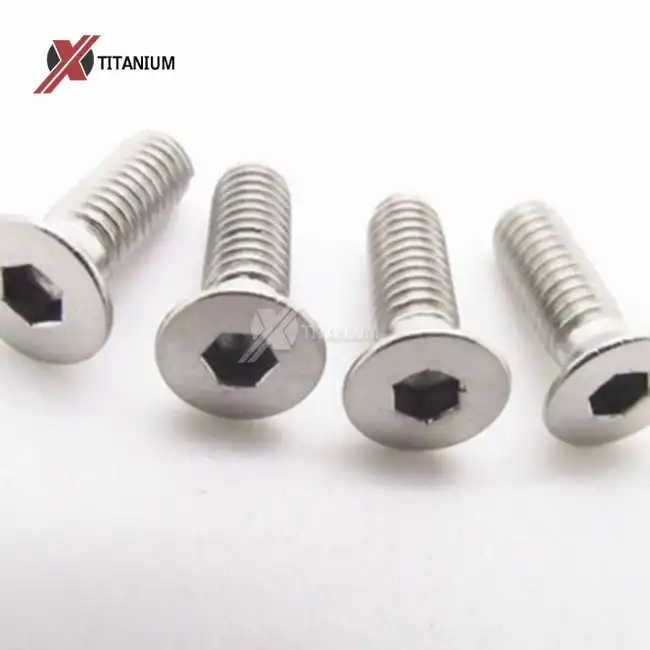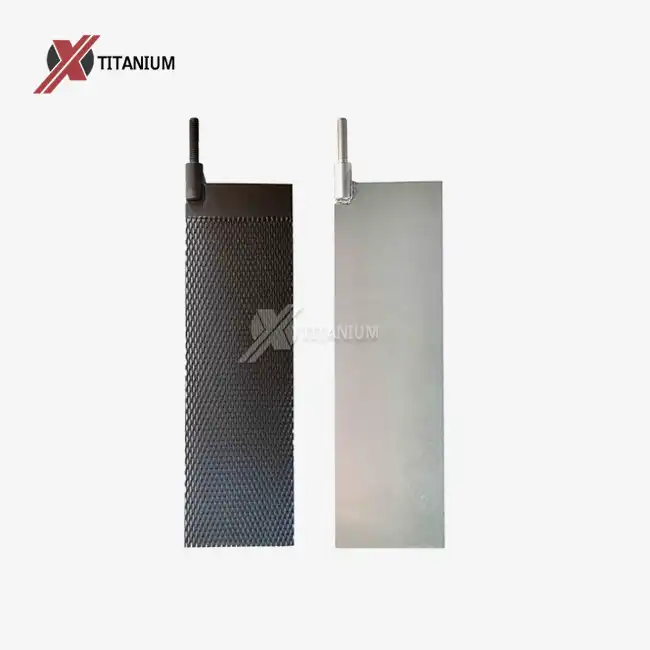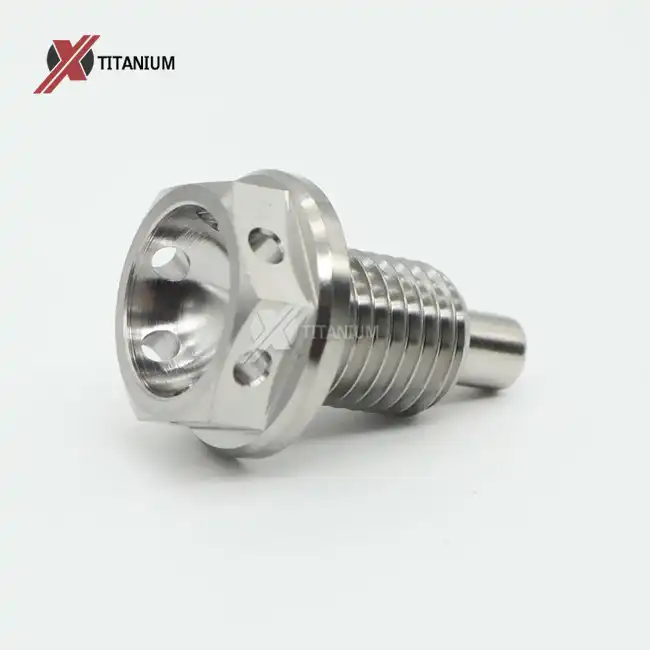Properties and Characteristics of Straight Titanium Wire
Mechanical Properties
Straight titanium wire boasts impressive mechanical properties that contribute to its wide-ranging applications. Its high tensile strength, typically ranging from 240 to 1000 MPa depending on the grade and processing, allows it to withstand significant loads without failure. This strength, combined with titanium's low density of approximately 4.43 g/cm³, results in an exceptional strength-to-weight ratio. This makes straight titanium wire an ideal choice for aerospace and automotive industries where weight reduction is crucial.
Moreover, titanium wire exhibits excellent fatigue resistance, maintaining its structural integrity under repeated stress cycles. This property is particularly valuable in applications such as medical implants and aircraft components, where long-term reliability is paramount. The wire also demonstrates good ductility, allowing it to be formed into various shapes without breaking, which is beneficial in manufacturing processes.
Chemical Properties
One of the most notable chemical properties of straight titanium wire is its outstanding corrosion resistance. This resistance stems from titanium's ability to form a stable, continuous, highly adherent, and protective oxide film on its surface when exposed to oxygen. This natural passivation layer protects the underlying metal from further oxidation and chemical attack, making titanium wire highly resistant to corrosion in various environments, including saltwater and many acidic solutions.
Titanium's chemical inertness also contributes to its biocompatibility, a crucial property for medical applications. The human body does not reject titanium, making it an excellent material for surgical implants, dental implants, and other medical devices. Furthermore, titanium wire does not cause allergic reactions, unlike some other metals used in medical applications.
Thermal Properties
Straight titanium wire exhibits unique thermal properties that enhance its versatility. It has a relatively high melting point of approximately 1668°C (3034°F), allowing it to maintain its structural integrity at elevated temperatures. This high-temperature stability makes titanium wire suitable for applications in jet engines, exhaust systems, and other high-heat environments.
However, titanium wire has a lower thermal conductivity compared to many other metals. While this might be a disadvantage in some heat transfer applications, it can be beneficial in scenarios where thermal insulation is desired, such as in aerospace heat shields or certain medical devices.
Manufacturing Process of Straight Titanium Wire
Raw Material Preparation
The manufacturing process of straight titanium wire begins with the careful selection and preparation of raw materials. High-purity titanium sponge or ingots serve as the primary input. These raw materials undergo rigorous quality checks to ensure they meet the required specifications for purity and composition. Any impurities or inconsistencies at this stage can significantly affect the final product's properties.
The titanium is then melted in a vacuum or inert gas environment to prevent contamination. This molten titanium is typically cast into ingots or continuously cast into bars. The choice between these methods depends on the desired final properties of the wire and the specific manufacturing process being employed.
Wire Drawing Process
The core of straight titanium wire production lies in the wire drawing process. This involves reducing the diameter of a titanium rod or bar by pulling it through a series of progressively smaller dies. The process begins with the titanium stock being pointed at one end to allow it to pass through the first die. As the material is drawn through each die, its cross-sectional area decreases while its length increases.
During this process, the titanium undergoes significant plastic deformation, which alters its microstructure and enhances its mechanical properties. The wire drawing process can be performed at room temperature (cold drawing) or at elevated temperatures (hot drawing), depending on the desired properties of the final product. Cold drawing typically results in higher strength but lower ductility, while hot drawing can produce wire with better formability.
Heat Treatment and Surface Finishing
After the wire drawing process, straight titanium wire often undergoes heat treatment to optimize its mechanical properties. Annealing, for instance, can relieve internal stresses induced during drawing, improve ductility, and enhance the wire's formability. The specific heat treatment parameters, including temperature and duration, are carefully controlled to achieve the desired balance of strength and ductility.
Surface finishing is the final step in the manufacturing process. Various techniques can be employed to achieve the desired surface characteristics. These may include chemical pickling to remove surface oxides, mechanical polishing for a smooth finish, or sandblasting for a matte appearance. Some applications may require additional surface treatments such as passivation to enhance corrosion resistance or coating for specific functional requirements.
Applications of Straight Titanium Wire
Aerospace and Aviation
In the aerospace industry, straight titanium wire plays a crucial role in various applications due to its exceptional strength-to-weight ratio and high-temperature performance. It is extensively used in the fabrication of aircraft fasteners, springs, and other critical components. Titanium wire mesh, woven from straight titanium wire, finds application in the construction of acoustic liners for jet engines, contributing to noise reduction while withstanding the extreme conditions within the engine.
Spacecraft and satellites also benefit from the use of straight titanium wire. Its low thermal expansion coefficient makes it ideal for applications where dimensional stability under varying temperatures is crucial. Moreover, titanium's resistance to space radiation and its ability to withstand the harsh environment of space make it a preferred material for various spacecraft components.
Medical and Dental Applications
The biocompatibility and corrosion resistance of straight titanium wire make it an invaluable material in the medical field. It is widely used in the manufacture of surgical implants, including orthopedic devices, cardiovascular stents, and dental implants. Titanium wire mesh, created from straight titanium wire, is used in cranioplasty procedures and for reinforcing other medical implants.
In dentistry, straight titanium wire is used in orthodontic applications, such as braces and retainers. Its low elastic modulus, compared to stainless steel, allows for the application of gentler, more consistent forces during orthodontic treatment. Additionally, titanium's resistance to bodily fluids and its non-allergenic nature make it an excellent choice for long-term dental appliances.
Industrial and Chemical Processing
The chemical industry heavily relies on straight titanium wire for its exceptional corrosion resistance. It is used in the construction of heat exchangers, pumps, valves, and other components exposed to corrosive chemicals. Titanium wire mesh screens, fabricated from straight titanium wire, are employed in filtration systems in chemical processing plants, offering durability and resistance to harsh environments.
In the energy sector, straight titanium wire finds applications in both traditional and renewable energy technologies. It is used in the construction of components for oil and gas extraction equipment, where its corrosion resistance to seawater and various chemicals is crucial. In renewable energy, titanium wire is utilized in the manufacture of components for solar panels and wind turbines, contributing to the longevity and efficiency of these green energy solutions.
Sports and Consumer Goods
The sporting goods industry has embraced straight titanium wire for its strength, lightness, and durability. It is used in the production of high-performance bicycle spokes, tennis racket strings, and golf club shafts. In water sports, titanium wire is utilized in the construction of diving equipment and underwater camera housings, taking advantage of its corrosion resistance in marine environments.
Consumer goods also benefit from the unique properties of straight titanium wire. It is used in the manufacture of eyeglass frames, offering strength and flexibility while being hypoallergenic. In the jewelry industry, titanium wire is prized for its durability, lightweight nature, and the ability to be anodized in various colors, allowing for creative and long-lasting designs.
Conclusion
Straight titanium wire, with its unique composition primarily of pure titanium or carefully engineered alloys, offers a remarkable combination of properties that make it indispensable across various industries. Its high strength-to-weight ratio, exceptional corrosion resistance, biocompatibility, and thermal stability have revolutionized applications in aerospace, medicine, chemical processing, and beyond. The manufacturing process, involving meticulous raw material preparation, precise wire drawing, and tailored heat treatments, ensures that straight titanium wire meets the exacting standards required for its diverse applications.
At Baoji Chuanglian New Metal Material Co., Ltd., we pride ourselves on being leading straight titanium wire suppliers. Our expertise in titanium products, including straight titanium wire, spans over a decade. Whether you're in aerospace, medical, or industrial manufacturing, we have the knowledge and capabilities to meet your specific titanium wire needs. For more information about our straight titanium wire or other titanium products, please don't hesitate to contact us at info@cltifastener.com or djy6580@aliyun.com.
FAQ
What grades of titanium are commonly used for straight titanium wire?
Common grades include Grade 1, Grade 2, and Grade 5 (Ti-6Al-4V), each offering different strength and purity levels.
How is the surface of straight titanium wire finished?
Surface finishes can include bright, polished, pickled, acid-cleaned, or sandblasted, depending on the application requirements.
What quality tests are performed on straight titanium wire?
Typical tests include hardness tests, bending tests, and hydrostatic tests to ensure product quality and performance.
What are the key features of straight titanium wire?
Key features include high corrosion resistance, low density, good thermal stability, and excellent strength-to-weight ratio.
In what industries is straight titanium wire commonly used?
It's widely used in chemical processing, various industries, sports equipment manufacturing, aerospace, and medical applications.
References
1. Lutjering, G., & Williams, J. C. (2007). Titanium (2nd ed.). Springer-Verlag Berlin Heidelberg.
2. Peters, M., Hemptenmacher, J., Kumpfert, J., & Leyens, C. (2003). Structure and Properties of Titanium and Titanium Alloys. In Titanium and Titanium Alloys: Fundamentals and Applications (pp. 1-36). Wiley-VCH.
3. Rack, H. J., & Qazi, J. I. (2006). Titanium alloys for biomedical applications. Materials Science and Engineering: C, 26(8), 1269-1277.
4. Boyer, R. R. (1996). An overview on the use of titanium in the aerospace industry. Materials Science and Engineering: A, 213(1-2), 103-114.
5. Donachie, M. J. (2000). Titanium: A Technical Guide (2nd ed.). ASM International.




